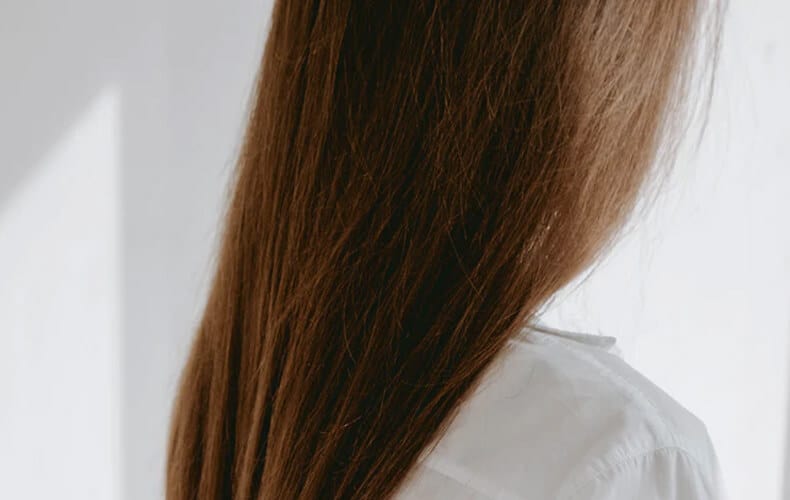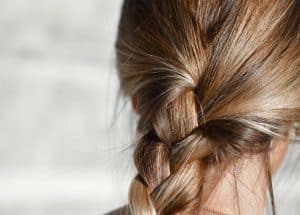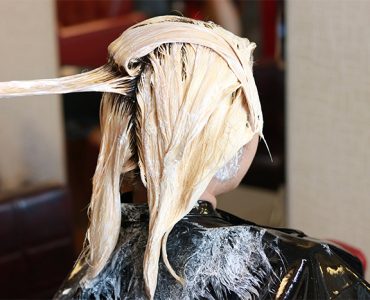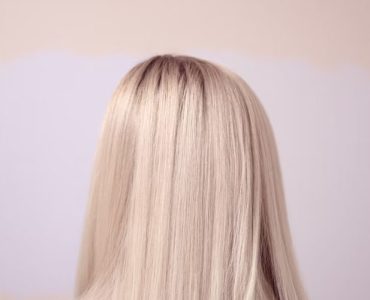Knowing your hair type is important. Not only does knowing your hair type matter for styling purposes, but this knowledge also keenly informs how to care for your hair type, as well. Good self-care ultimately must include knowing exactly what your hair needs to look and feel its best.

Let’s break down what you need to keep in mind, when it comes to how to figure out your hair type.
How Many Different Hair Types Are There?
One of the more frustrating things about figuring out your hair type is the fact that there are a few different typing systems for hair. The Andre Walker Hair Typing System, for example, breaks everything down in extremely specific terms. Even straight hair has several sub-categories here. Other systems are a little less involved.
Read This Next:
What Is My Hair Type?
For the sake of keeping things as straightforward as possible, we’re going to draw from systems that categorize hair types in four different ways. We would suggest researching different types in greater detail, beyond the basics we’re discussing here.
Hair Type #1: Straight Hair
 Porosity, elasticity, and variance of curl are three things to keep in mind, in terms of factors which determine your hair type. Does your hair float in water? Sink? When you draw out a single hair from your head, what happens when you let it go? If you have curly hair, is it consistently the same, or is there some variety among the curls (probably).
Porosity, elasticity, and variance of curl are three things to keep in mind, in terms of factors which determine your hair type. Does your hair float in water? Sink? When you draw out a single hair from your head, what happens when you let it go? If you have curly hair, is it consistently the same, or is there some variety among the curls (probably).
By answering questions such as these, you can figure out your hair type. Pay attention to things like diameter, density, shape, and texture.
Straight hair tends to be the oiliest of the four major hair types. Because of this, you will probably need to wash it more. Avoid products whenever possible that will add more oil to your hair. There is no natural curl to any hair that qualifies as straight, and the hair itself can be either very coarse or very fine.
Read This Next:
Hair Type #2: Wavy Hair
 Some lump the lower end of the wavy hair spectrum in with straight hair. Some don’t. Again, we would suggest doing some more research.
Some lump the lower end of the wavy hair spectrum in with straight hair. Some don’t. Again, we would suggest doing some more research.
Regardless, wavy hair is generally considered any hair that is not straight, but also not curly. There are a few different subcategories within this type. Wavy hair can be loose, moderately wavy (the waves are more or less adhering to the shape of your head), or it can be classified as defined. With defined wavy hair, we’re talking about something that’s pretty course. Hair like this can frizz rather easily.
Stay away from oil-based products, and be wary of anything that could be described as cream-based.
Hair Type #3: Curly Hair
 If your hair features S-shaped curls which stand as loose, loopy strands, then you meet the general requirements for curly hair. If your curls come from your roots, then you have a much more specific type of curly hair. At the end of spectrum, you have people whose hair could be seen as very tight, highlighted by a distinctive spring in both appearance and touch.
If your hair features S-shaped curls which stand as loose, loopy strands, then you meet the general requirements for curly hair. If your curls come from your roots, then you have a much more specific type of curly hair. At the end of spectrum, you have people whose hair could be seen as very tight, highlighted by a distinctive spring in both appearance and touch.
Read This Next:
Vegetable oil-based products are often used in the treatment of curly hair. Experts also often suggest curly hair types should look for leave-in products that appeal to them. Air-drying is considered to be preferable over using a blow dryer, and combing curly hair can cause frizzing and breakage issues.
Hair Type #4: Coils/Kinky Hair
 Some people categorize this hair type as coils. Others would describe it as being kinky. Regardless of the specific word you use, we are basically still talking about the same thing. We are still talking about hair that is very, very tight, as well as being very, very fragile. Hair in this category generally needs a great deal of care, depending upon what you want to do.
Some people categorize this hair type as coils. Others would describe it as being kinky. Regardless of the specific word you use, we are basically still talking about the same thing. We are still talking about hair that is very, very tight, as well as being very, very fragile. Hair in this category generally needs a great deal of care, depending upon what you want to do.
Gentleness is essential for anything you will do with this hair type, which can be physically defined by the presence of very tight coils. Your strands are not only going to be very thin, but they will often be very densely collected on your head. You will want to focus on moisturizer products, and on wearing the hair loose whenever possible.
Conclusion
Using the above information, you should be able to develop a general idea of your hair type. This ensures you can care for it properly.









